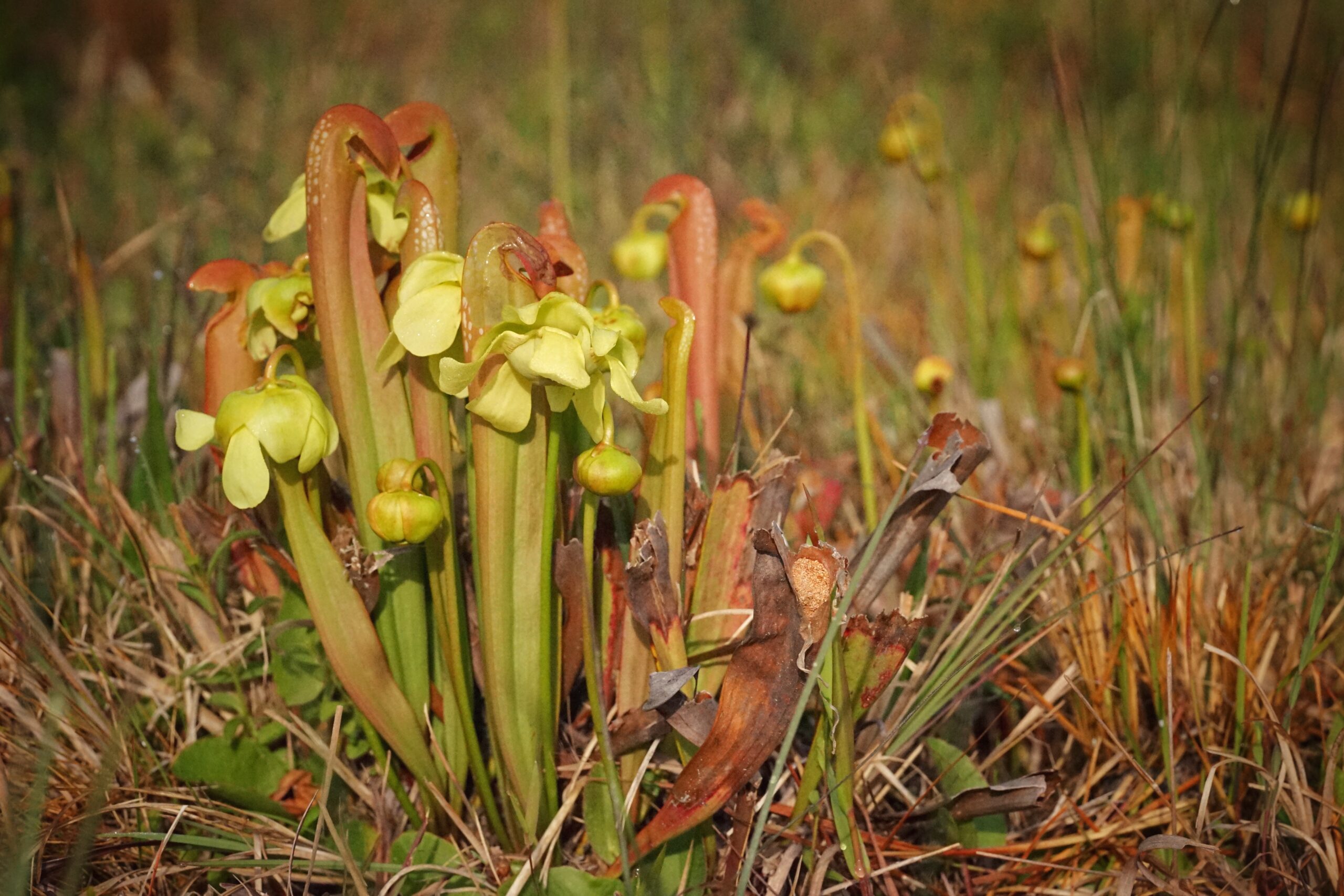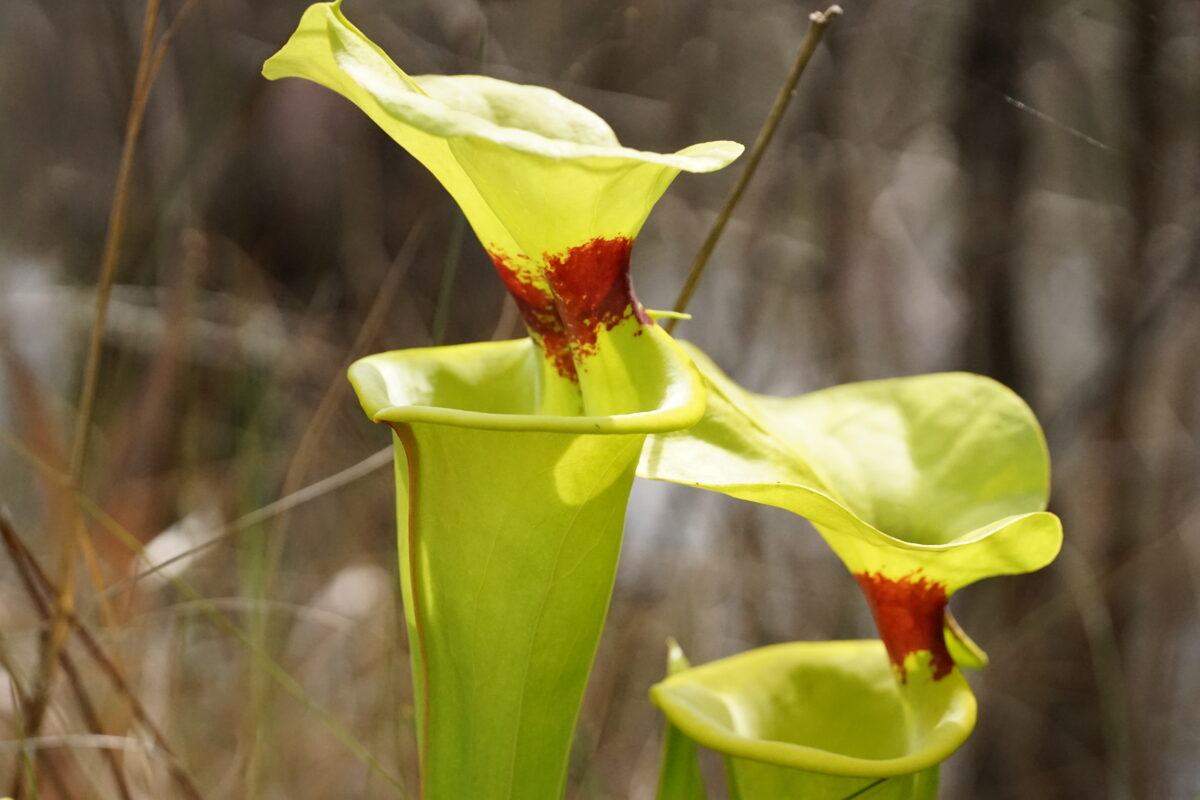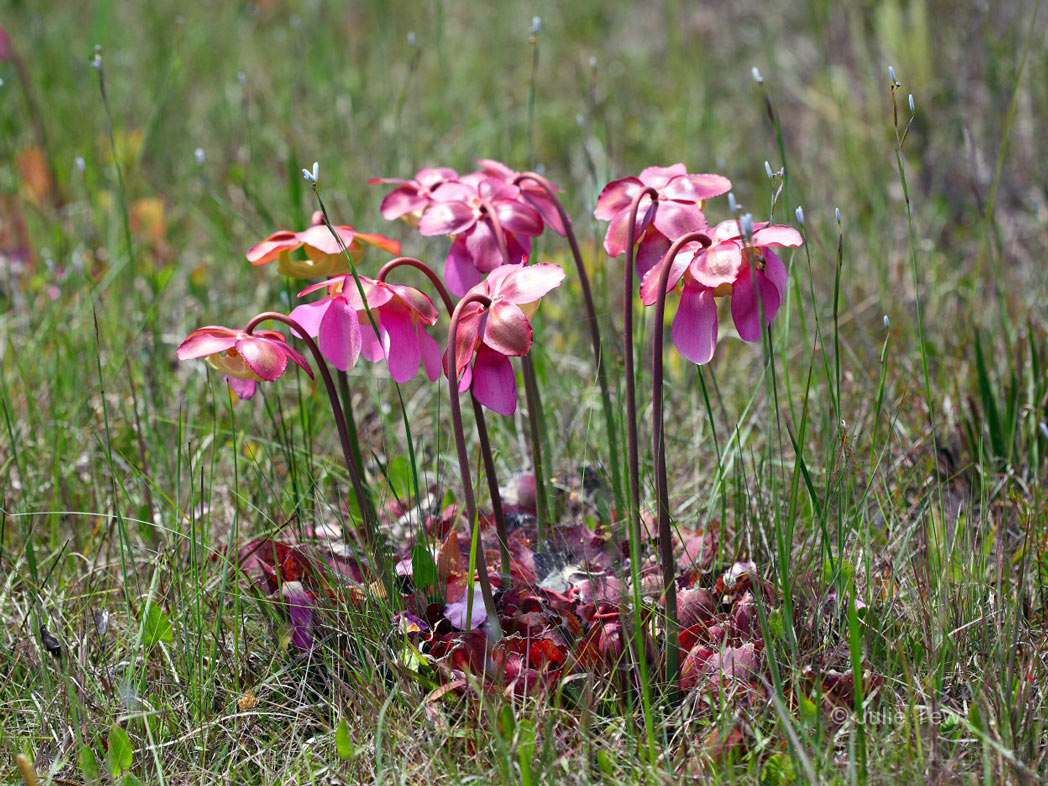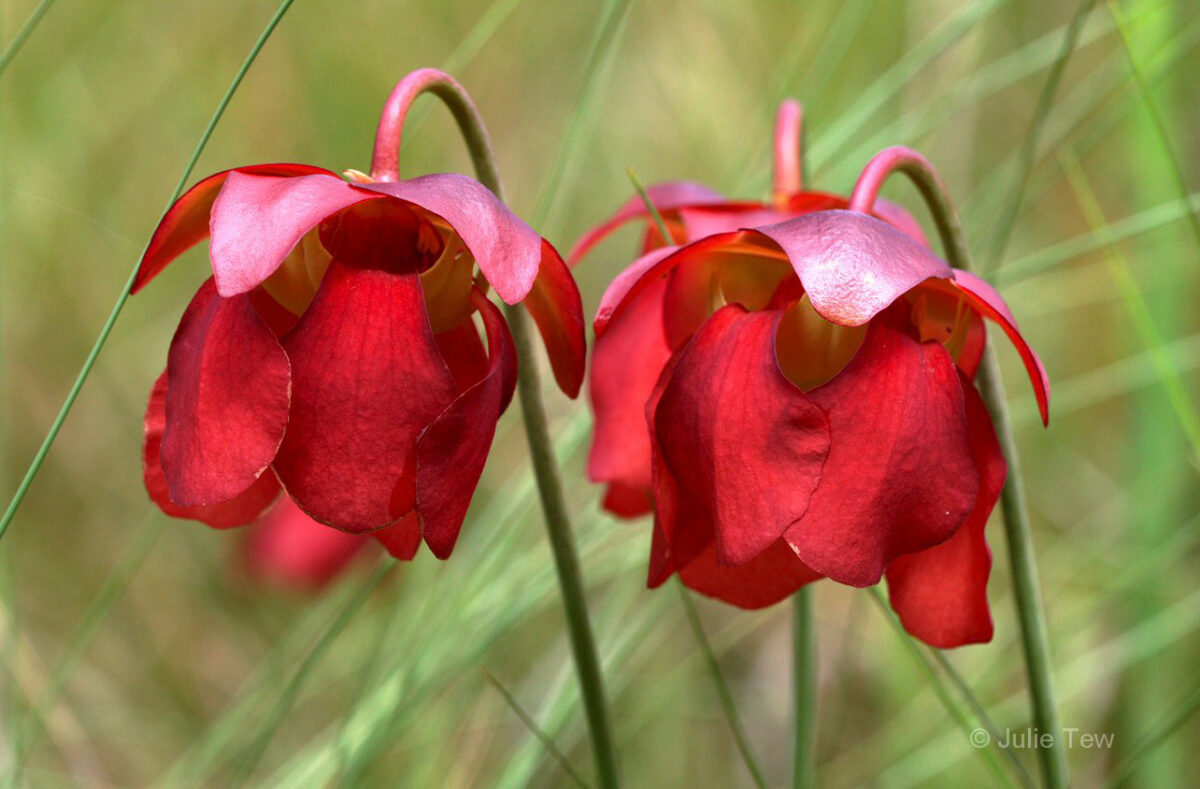Hooded pitcherplant
Pictured above: Hooded pitcherplant (Sarracenia minor) by Emily Bell. Click on terms for botanical definitions. View post as a PDF.
Spring is a glorious time in Florida’s wet flatwoods, savannahs and bogs, which come to life with the colorful blooms of orchids, carnivorous plants, tickseeds and so much more. The carnivorous Hooded pitcherplant (Sarracenia minor) grows in small to large dense clumps and brightens these wetlands with its large sunny yellow flowers. While the majority of Florida’s pitcherplant diversity is restricted to the Panhandle and a few northeastern counties, Hooded pitcherplants are conspicuously absent west of Gadsden, Liberty and Gulf counties and range into Central Florida. Hooded pitcherplants thrive best in areas with natural fire frequencies. They are listed as state-threatened due to habitat loss and alteration.
The Hooded pitcherplant produces solitary bright yellow to greenish-yellow 5-petaled nodding flowers. The leaves are green to greenish-yellow at the base, fading into a reddish-pink at the top. They form the plant’s “pitchers,” which are unique from most other Sarracenia species in that the leaves curl over the pitcher’s opening to form a hood. Another distinguishing feature of the pitchers are the white translucent spots on their upper portions.
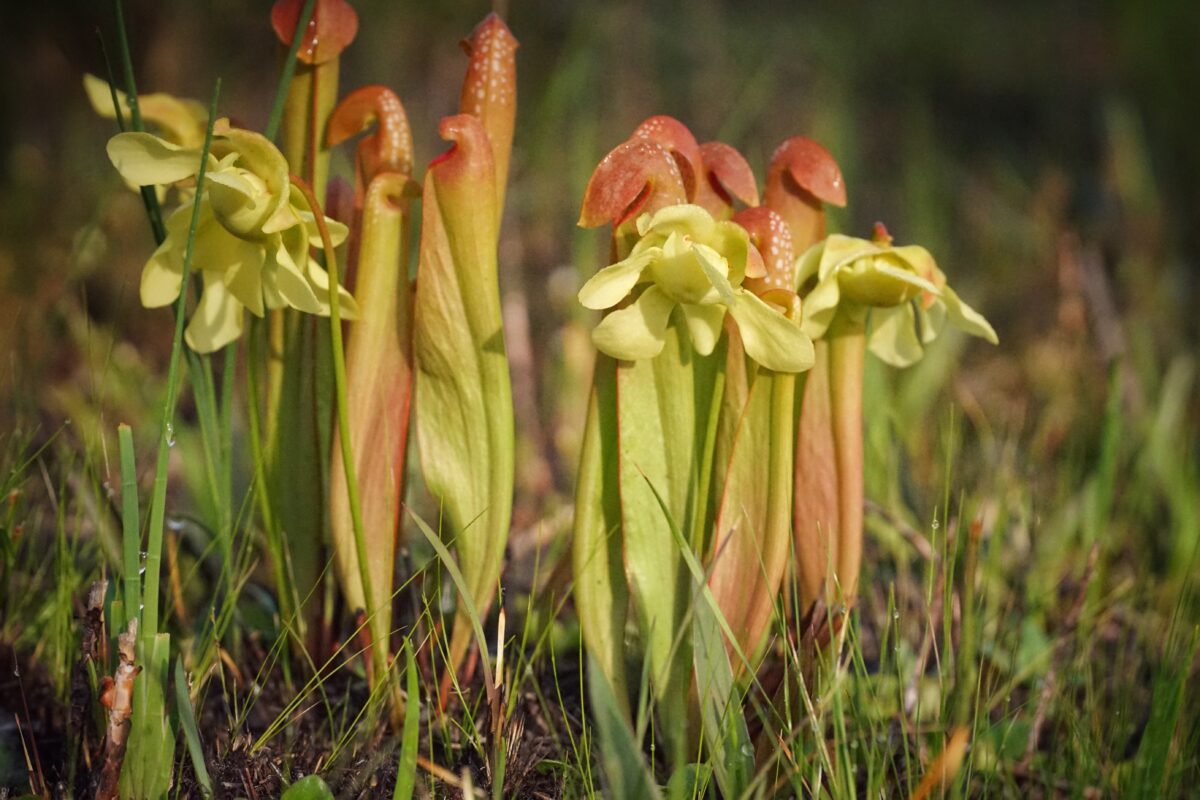
Hooded pitcherplants employ a pit-fall strategy for capturing their prey. Insects are attracted by nectar glands inside the hood. Once inside, light coming through the translucent white spots fool the insect into flying towards them in an attempt to exit, instead of the toward the actual opening. The insect will then fall into the slippery tube, which contains downward facing hairs that prevent it from escaping. It then hits the bottom of the pitcher where a digestive fluid allows the plant to break down the insect and absorb its nutrients.
Family: Sarraceniaceae (Pitcherplant family)
Native range: Big Bend Counties east to Nassau County and south into Central Florida as far as Highlands and Okeechobee Counties
To see where natural populations of Hooded pitcherplants have been vouchered, visit florida.plantatlas.usf.edu.
Lifespan: Perennial
Soil: Inundated to saturated soils
Exposure: Full sun to partial shade
Growth habit: Up to 6-10 inches
Carnivorous plants have very specific habitat requirements and as such are not suited for use in urban native plant gardens. However, many Florida native carnivorous plants can be purchased from online retailers. Always be certain that retailers are certified by their state agriculture department, who inspect and ensure proper origin of plants.
Learn more about Hooded pitcherplants from the Florida Native Plant Society.
For information on other Sarracenia species, see these resources:

